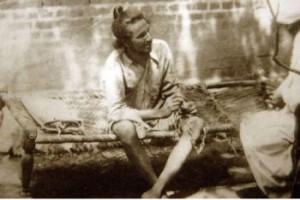We in the West tend to recall only the great Mahatma Gandhi when we think of India’s long and gruelling fight for freedom from the British Raj. But today we pay tribute to another extraordinary Indian Independence revolutionary – Bhagat Singh – of whom Gandhi himself wrote: “There has never been, within living memory, so much romance round any life as has surrounded that of him.” Indeed, it is in no way surprising to discover that the brief but stellar life of this Indian icon has been Bollywooded not just once but several times. Born into a family of radicals, revolution was fed to him with his mother’s milk while his father and uncles were jailed as participants in the pro-liberation Ghadar Movement during World War One. At the age of 12, Singh’s revolutionary destiny was sealed after he ran away from school to visit the site of the Jallianwala Bagh massacre – where British Indian Army officers without warning or provocation shot and killed nearly 400 unarmed men, women and children. By the age of 16 – fuelled by the ideas of Marx, Engels and Bakunin – Singh developed a socialist and secular vision for India which extended beyond mere freedom towards nation-building and the removal of the caste system. After several years at the forefront of the underground armed struggle for independence, Singh became a national hero when he threw a bomb in the Central Legislative Council in Delhi in 1929 in protest of the repressive Public Safety Bill. As intended, nobody was hurt; the goal was to “make the deaf hear.” Bhagat Singh could easily have escaped but allowed himself to be arrested in order to use his court appearances as a revolutionary platform. With courageous and powerful speeches in the court that bore little relevance to his own defense, he articulated his vision for a free India – enduring prison persecution, hunger strikes, forced-feeding and violent beatings in order to give voice to his self-proclaimed “people’s movement.” Sentenced to life imprisonment, Singh was subsequently tried – along with two fellow revolutionaries – for the killing of a police officer two years earlier. Conducted by a special tribunal fraught with violations of due process, the farcical trial ended in death sentences. Singh refused to move a mercy petition and he and his two young comrades were hanged in Lahore Jail on 23rd March 1931. He was 23 years old.
Eight decades after Bhagat Singh’s execution, there has been a resurgence of his popularity in India amidst the current political backlash. India’s Independence movement was never solely confined to wresting power; the struggle for emancipation advocated self-reliance rather than foreign dependence, community and equality rather than division and disparity. But as India careens evermore into the reptilian folds of capitalism, it is deeply unfortunate that – unlike Nelson Mandela – Bhagat Singh did not survive to usher in its new era of independence.



17 Responses to 23rd March 1931 – the Martyrdom of Bhagat Singh